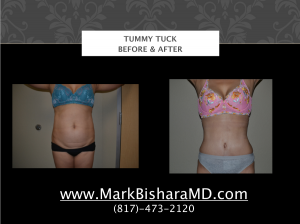

(Before and After Pictures of one of our patients)
For the right patient, exhibiting the right hair and scalp characteristics, hair transplant surgery can be a life changing cosmetic procedure. However, not every hair loss sufferer is a good candidate for surgical hair restoration. It’s important to fully understand the criteria that makes a good hair transplant candidate in order to make a better informed decision when considering surgical hair restoration.
The best way to find out if you are a candidate for a hair restoration procedure is to go to a dermatologist or plastic surgeon specializing in hair restoration. The answer will depend on the cause of your hair loss, your age, the stability of your donor supply, how extensive you hair loss is, your expectations and a number of other important factors that will be taken into account.
For the right candidate hair restoration surgery can significantly improve your appearance and general sense well being. You must have realistic expectations before undergoing a hair transplant procedure.
Here are some general types of patients that are great candidates for hair transplants:
The best candidates for hair restoration surgery are:
- Men who have been losing their hair due to Male Pattern Baldness for more than five years or who have progressed to a Norwood class 3 or above.
- Men with realistic expectations and who understand that their hair loss might continue to progress even if they are taking prescription medication to stop the progression.
- Men who have been balding for many years and who’s pattern has stabilized and are interested in just adding some hair to provide a more youthful appearance.
- Men and women who have lost hair due to trauma or burns
- Men and women who have lost hair due to other cosmetic procedures such as face-lifts.
Some women are candidates for hair restoration surgery. They are:
- Women who have suffered hair loss due to mechanical or traction alopecia (non-hormonal).
- Women who have had previous cosmetic or plastic surgery and are concerned about hair loss around the incision sites.
- Women who have a distinct pattern of baldness, similar to that of male pattern baldness. This includes hairline recession, vertex thinning (on the crown or top of the scalp), and a donor area that is not affected by androgenetic alopecia.
- Women who suffer hair loss due to trauma, including burn victims, scarring from accidents, and chemical burns.
- Women with alopecia marginalis, a condition that looks very similar to traction alopecia.

Please visit the website of Dr. Bishara, who specializes in Hair Restoration, Robotic Hair Transplants and Plastic Surgery at www.MarkBisharaMD.com or call our office at (817) 473-2120.
(Antes y después de las imágenes de uno de nuestros pacientes)
Para el paciente adecuado, mostrando las características del cabello y del cuero cabelludo derecha, la cirugía de trasplante de cabello puede ser un cambio de vida procedimiento cosmético. Sin embargo, no todo paciente a la pérdida del cabello es un buen candidato para la restauración quirúrgica del cabello. Es importante comprender plenamente los criterios que hacen un buen candidato a trasplante de pelo con el fin de tomar una decisión mejor informada al considerar la restauración quirúrgica del cabello.
La mejor manera de averiguar si usted es un candidato para un procedimiento de restauración del cabello es ir a un dermatólogo o cirujano plástico que se especializa en la restauración del cabello. La respuesta dependerá de la causa de su pérdida de cabello, su edad, la estabilidad de su oferta de donantes, lo extenso que la pérdida del cabello es, de sus expectativas y una serie de otros factores importantes que se tendrán en cuenta.
Para la cirugía de restauración capilar candidato adecuado puede mejorar significativamente su apariencia y la sensación general de bienestar. Usted debe tener expectativas realistas antes de someterse a un procedimiento de trasplante de cabello.
Estos son algunos tipos generales de los pacientes que son grandes candidatos a trasplantes de cabello:
Los mejores candidatos para la cirugía de restauración del cabello son:
Los hombres que han ido perdiendo su cabello debido a la calvicie de patrón masculino durante más de cinco años o que han progresado a una clase Norwood 3 o superior.Los hombres con expectativas realistas y que entienden que su pérdida de cabello puede continuar progresando incluso si están tomando medicamentos de prescripción para detener la progresión.Los hombres que han sido quedando calvos por muchos años y que son modelo se ha estabilizado y está interesado en sólo añadir un poco de pelo para proporcionar un aspecto más juvenil.Los hombres y las mujeres que han perdido el pelo debido a un traumatismo o quemadurasLos hombres y las mujeres que han perdido el pelo debido a otros procedimientos estéticos, como liftings.Algunas mujeres son candidatos para la cirugía de restauración capilar.
Ellos son:
Las mujeres que han sufrido la pérdida de cabello debido a la alopecia de tracción mecánica o (no hormonal).Las mujeres que han tenido cirugía plástica o cosmética anterior y están preocupados por la pérdida de pelo alrededor de las incisiones.Las mujeres que tienen un patrón distinto de la calvicie, similar a la de la calvicie de patrón masculino. Esto incluye recesión línea del cabello, adelgazamiento vértice (en la corona o parte superior del cuero cabelludo), y una zona donante que no está afectada por la alopecia androgenética.Las mujeres que sufren de pérdida de cabello debido a un traumatismo, incluidas las víctimas de quemaduras, cicatrices de accidentes y quemaduras químicas.Las mujeres con alopecia marginalis, una condición que se ve muy similar a la alopecia por tracción.
Por favor, visite el sitio web del Dr. Bishara, que se especializa en la restauración del pelo, robóticos trasplantes de pelo y Cirugía Plástica en www.MarkBisharaMD.com o llame a nuestra oficina al (817) 473-2120.















